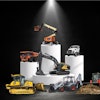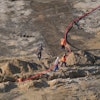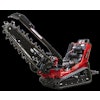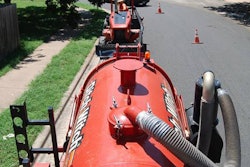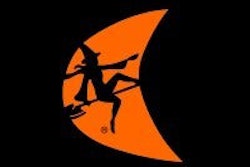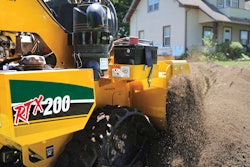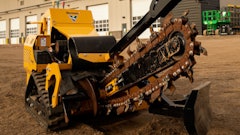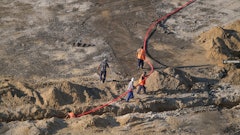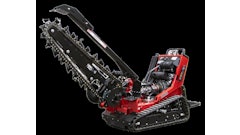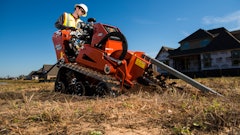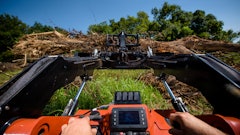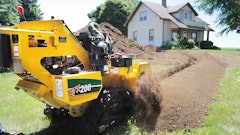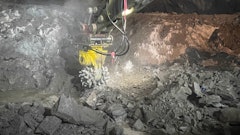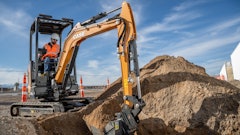
By Steve Seabolt, Ditch Witch product manager, Heavy-Duty Trenchers & Microtrenchers
High-speed internet has grown in popularity. And now, the original focus of routing fiber to the home has expanded to encompass routing fiber to everything. As more neighborhoods, businesses and government facilities demand fiber connections, the equipment responsible for deployment has evolved. Equipment manufacturers have taken contractor and operator feedback to heart, innovating solutions to better fit the growing needs of the industry.
Traditionally, those product innovations were focused on long-haul equipment for installation routes between cities and towns, and sometimes backbone lines. Manufacturers focused on plows for fast and efficient installation in areas with few surface or underground obstructions. Horizontal directional drills were also a focal point, perfecting a solution for jobsites with rough terrain, wooded areas or water crossings.
However, when it came to installation between the backbone and premise – known as the last mile – contractors would often use compact plows and drills better suited for the other applications. Equipment innovations specifically designed for effective installation in the “last mile” are much more common today. For example, microtrenchers are increasingly more popular on these jobsites. And new innovations in today’s microtrenchers make them a more cost-effective, effective solution for the last mile.
Navigating Utilities
What’s beneath the surface is a major concern for contractors connecting fiber to a premise. Once in a sprawling city or newer, residential town, they are challenged to navigate a patchwork of buried utilities, as well as the natural ground obstacles. The mix of man-made and natural terrain makes trenching and drilling a complicated task, which has the potential to decrease productivity while trying to safely operate around existing obstructions and utilities.
Cutting the time and costs associated during the last mile, microtrenchers are designed to trench shallow enough to reduce the likelihood of interference with most existing utilities. With cutting depths that range up to 16 inches, and widths between 0.375 to 2 inches, these narrow, small trenches enable contractors to install fiber shallower than other utilities with minimal disruption to the surrounding infrastructure.
Navigating neighborhoods and business parks has also been a concern for contractors – these areas are not often built in straight, easily-navigable lines. Microtrenchers provide more maneuverability by enabling operators to efficiently cut on a street corner or around a cul-de-sac. The Ditch Witch MT16, for instance, can swing up to 6° in each direction.
Quick, Clean Cuts
Traditional methods of installing fiber in the last mile included additional costs that contractors were hesitant to accept, such as restoration costs. Trenching through concrete or removing slabs involved increased expenses to return the area to normal. And, when operating in a highly trafficked area, any work done to infrastructure also impacted the people who use it. A city street, for instance, must be closed to pedestrians for the length of a project.
The shallow and thin trenches of a microtrencher can be created in a single, quick pass, slicing the cost-per-foot on a job and minimizing ground disruptions. Design features – like a floating saw shroud that follows the ground contour with contact pressure – help to produce a sharper-edged cut while also cleaning out spoils. Hydraulic accumulators also provide a major benefit by maintaining constant pressure on the saw frame.
Blade Longevity
The type of pavement a contractor is working with can negatively impact the cost-per-foot on a job – asphalt and concrete cause different rates of wear. For example, harder or more abrasive materials wear blades or teeth quickly, slowing the cutting process and reducing productivity.
Familiarity with different ground conditions can help a contractor select the best saw blade for the jobsite. The Ditch Witch factory, for instance, offers a complete lineup of saw blades ranging from standard carbide-tipped blades to the Ditch Witch-exclusive PDC Fiberblade with diamond-embedded carbide. These exclusive saw blades can last up to 10 times longer than standard blades in certain conditions.
Case in point: Corbel Communications Industries has found significant savings using a Ditch Witch microtrencher with the exclusive PDC Fiberblade. Due to the blade’s longevity, the company’s workers can trench tens of thousands of feet per blade. In the past, they could go only around 100 feet before maintenance was required.
Innovations to Meet Future Demand
The equipment available to contractors and operators for the last mile of fiber deployment is always evolving. By becoming more familiar with the evolution of fiber deployment and various installation methods like microtrenching, and by listening to direct contractor feedback, innovations will continue to meet the demand for fiber while avoiding infrastructure and unnecessary expenses.

